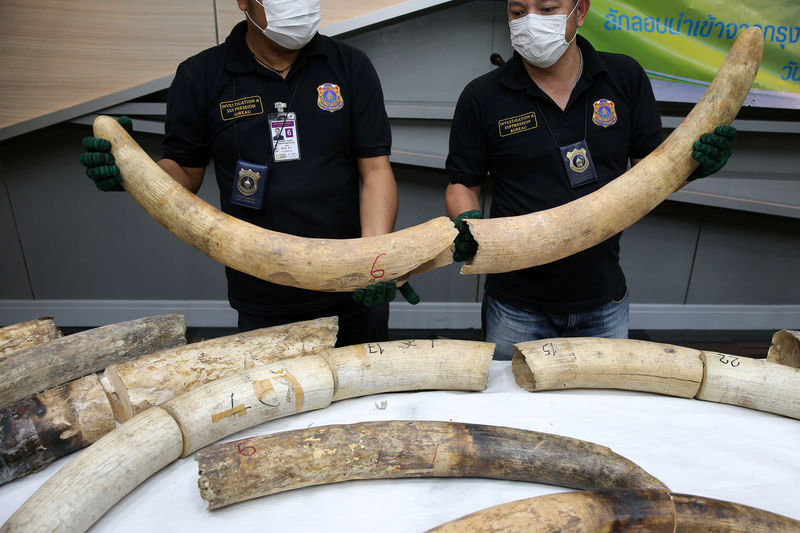
More African Ivory Being Smuggled into China Despite Ban
NAIROBI – More African ivory is being smuggled into China from Myanmar and Beijing’s ban on trade in ivory has failed to dampen imports, a report by conservation group Save the Elephants said on Tuesday. Wildlife activists said they welcomed China’s ban this year on the ivory trade, arguing the step by a country that […]

NAIROBI – More African ivory is being smuggled into China from Myanmar and Beijing’s ban on trade in ivory has failed to dampen imports, a report by conservation group Save the Elephants said on Tuesday.

Wildlife activists said they welcomed China’s ban this year on the ivory trade, arguing the step by a country that is the world’s largest importer and end user of tusks was vital to reducing the slaughter of the endangered species.
But it has not stopped what Save the Elephants called the “prolific growth” in trading in a town in the “Golden Triangle” area, where Thailand, Laos and Myanmar meet at the confluence of the Ruak and Mekong Rivers, south of China.
There has been a 60 percent growth in new ivory items seen for sale in the Myanmar-China border town of Mong La in the past three years and 90 percent of buyers are Chinese wishing to smuggle the ivory home, the report said.
It gave no separate figures for the period since the ban was introduced.
Myanmar has the world’s largest population of captive elephants, 5,000 in all, but trade in tusks at Mong La and elsewhere increasingly comes from elephants of African origin, the report said.
Myanmar’s government spokesman Zaw Htay was not immediately available for comment.
“Demand is still very high in China … Myanmar has over 2,000 kilometres of borderline with China which is very easy for smugglers to bring ivory across,” said researcher Lucy Vigne.
She co-authored the report with Esmond Bradley-Martin, a prominent American investigator of the illegal ivory and rhino horn trade who was found dead in his home in the Kenyan capital with an unexplained stab wound in his neck in February.
He had spent decades tracking the movement of animal products, mostly from Africa to markets in Asia.
The number of elephant killed by poachers in South Africa has sharply increased over the past few years – after a decade-free of poaching, two elephants were killed in the Kruger National Park in 2014.
The following year, 2015, the elephant poaching death toll sharply rose to 19, and in 2016 it had more than doubled to 46. Last year, it continued to rise dramatically, with 67 elephants poached from the Kruger and one in KwaZulu-Natal.
(Additional reporting by Poppy McPherson in Yangon Editing by Maggie Fick, Matthew Mpoke Bigg and Jenni Baxter)
